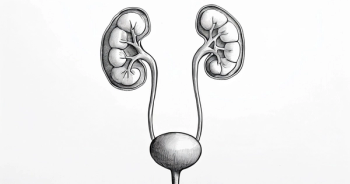
Targeted CLL Agents Reshape Treatment Paradigm, But Unmet Needs Remain
Despite major advances, real-world data show diminishing survival outcomes and treatment-limiting toxicities in second line or later CLL treatment.
The treatment paradigm for chronic lymphocytic leukemia (CLL) and small lymphocytic lymphoma (SLL) has shifted dramatically in the past decade, with targeted therapies—especially Bruton tyrosine kinase inhibitors (BTKi’s) and BCL2 inhibitors (BCL2i’s)—replacing chemoimmunotherapy (CIT) as the preferred approach. Despite these advances, real-world data show that patients requiring second-line or later therapy (≥2L) still face diminishing survival outcomes and treatment-limiting toxicities.1
These findings come from a recent retrospective cohort study led by Matthew S. Davids, MD, MMSc, director, clinical research, Division of Lymphoma, Dana-Farber Cancer Institute, associate professor, medicine, Harvard Medical School. Davids et al used the Cancer Outcomes Research and Evaluation (COTA) electronic health record database to examine 1283 adults in the United States who began second-line treatment for CLL/SLL between 2014 and mid-2022.
Over 42% of these patients advanced to a third line of therapy (3L), and 17.8% moved to a fourth line (4L). Throughout the study period, the use of CIT fell sharply—from 35.6% in 2014 to 11.3% in 2023. Meanwhile, BTKi use grew from 41.7% to 62.3%, and BCL2i therapy rose from 0% to 20.8%.
These treatment shifts reflect changes in clinical practice following the FDA approval of agents such as ibrutinib (Imbruvica), acalabrutinib (Calquence), and venetoclax (Venclexta). In the retrospective study the most common 2L therapies were ibrutinib (33.6%), bendamustine/rituximab (15.9%), and acalabrutinib (9.2%).
Diminishing Outcomes With Successive Treatment Lines
Despite the growing use of targeted agents, outcomes declined with each additional line of treatment. The median real-world time to next treatment (rwTTNT) dropped from 31.9 months in 2L to 23.1 months in 3L and just 15.0 months in 4L. Similarly, real-world progression-free survival (rwPFS) fell from 33.8 months in 2L to 24.5 months in 3L and 16.5 months in 4L. Overall survival followed the same downward trajectory—falling from a median of 80.1 months in 2L to 58.1 months in 3L and 51.9 months in 4L.
Among those who received ibrutinib, rwPFS in 2L was 40.3 months, declining to 28.6 months in 3L and 30.6 months in 4L. Similar patterns were observed with acalabrutinib- and venetoclax-based therapies. While these results indicate the effectiveness of targeted agents compared with CIT, they also highlight a pressing need for more durable and tolerable treatment options in later lines.
“Our study highlights that patients with CLL treated recently in community practice with targeted therapies still need new treatment options to extend their survival,” Davids said in an interview with Targeted Oncology. “We found that nearly half of patients died before starting a fourth line of therapy, suggesting that we should explore incorporation of novel therapeutic approaches in earlier lines of therapy.”
Tolerability Issues
Tolerability also emerged as a significant concern in the 2L and later CLL settings. Nearly half of the patients treated with ibrutinib (44.2%) or acalabrutinib (45%) in 2L discontinued therapy due to toxicity. In contrast, fixed-duration regimens such as rituximab plus venetoclax had higher treatment completion rates (68.2%). These findings underscore the importance of balancing efficacy with safety in the real-world management of relapsed/refractory CLL.
A comparison of treatment patterns before and after the COVID-19 pandemic revealed a shift toward less immunosuppressive regimens. Among patients who initiated 2L therapy in 2020–2022, acalabrutinib was prescribed most frequently (30%), overtaking ibrutinib (20.5%). Twelve-month rwTTNT and rwPFS rates were similar between pre-pandemic and pandemic-era patients, though longer follow-up is needed to assess the durability of these outcomes.
Limitations and Takeaways
Limitations of this study noted by Davids et al include the retrospective design, potential for missing data, and lack of standardized criteria for progression assessment in real-world practice. Despite these constraints, the findings offer an important snapshot of current CLL treatment dynamics in the United States. The study also affirms trends seen in clinical trials and other registries, including the CLL CONNECT study, which reported similar declines in survival outcomes with each subsequent therapy.
“This research offers an important glimpse into how real-world patients with CLL are being treated over time and what challenges still remain. While new therapies have brought hope and progress, we see that outcomes can worsen with each additional line of treatment. That tells us there is still work to do. By better understanding how treatments are used outside of clinical trials, we can continue to improve care and, most importantly, help patients live longer and better lives,” C. K. Wang, MD, chief medical officer, COTA, and an author on the study, said in an interview with Targeted Oncology.








































